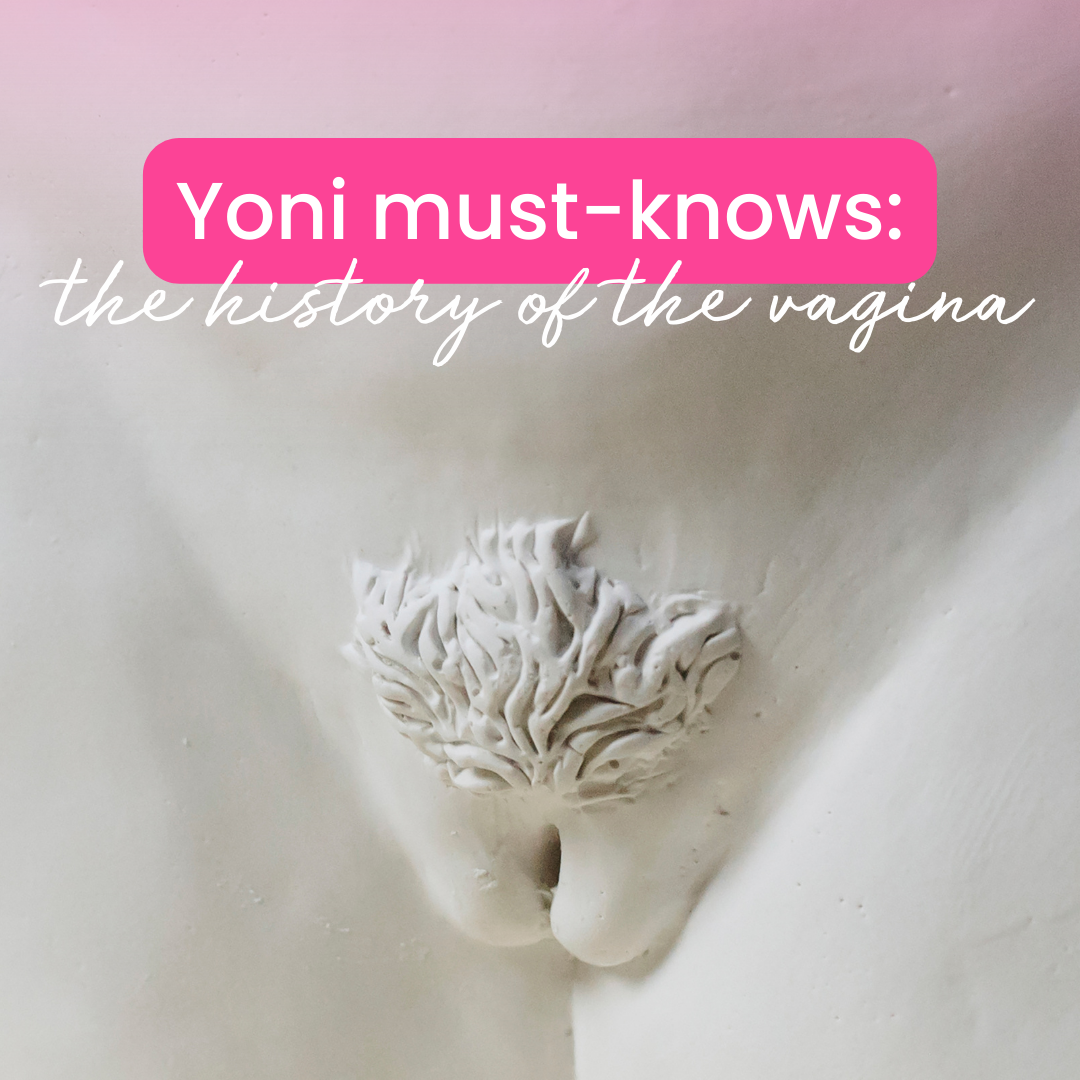We all know what the vagina is, but has it ever occurred to you the history of it? As strange as it sounds, the history of the vagina is a long and complicated one. Here’s what we know in a nutshell…
First off, what is a ‘Yoni’?
There is no one word to describe the vagina, vulva and womb. The closest word is Yoni, a Sanskrit word, which is roughly interpreted as the womb yet connotes the female sexual organs.
3500 BCE, Mesopotamia
The Sumerians saw the vulva and vagina as sacred, and even wrote poems about Ishtar’s vagina, also known as Innana, who was the goddess of love, sex, beauty, desire and fertility. Later, The Sumerians began to worship Nin-Imma, another goddess, who was “the divine personification of the female genitalia”.
Overall, the vagina was referred to as “the cradle of life”, the start of everything. The Sumerians even wore clay models of the vulva as amulets that were said to ward off evil spirits, infertility and impotence. An interesting start to the history of the vagina, but the worship swiftly began to fade as years went by…
Let’s take a trip to Greece
Fast forward to Ancient Greece, the Yoni was still somewhat praised, however the vagina was considered an inside penis. There was toxicity surrounding the idea that people with vaginas envied penises. Because of that, penises were thought of as sacred and a fertility symbol. After all of this, women were considered as a use for male pleasure and having babies. What an ick.
The downfall
It starts to go a little more downhill as we enter the Medieval Period. People began to think the vagina was repulsive in the 11th and 12th centuries. They were considered bad and a temptation as women were symbols of lust and deceit. During this time, many religions also thought of women being impure during menstruation.
Around this time, statues and carvings known as Sheela Na Gigs began to appear in order to attempt to inspire fear and disgust for vaginas. They showed an exaggerated vulva which was meant to warn about lust. They’re still found to this very day across churches in Europe…
Where it gets medical
In the late 1600’s, accurate diagrams of vaginas finally started to appear, but the word ‘vagina’ didn’t actually become apparent until the 17th century… As a medical term. It was also thought that to conceive a child, both a man and woman had to have an orgasm. Female pleasure was very misunderstood, if you couldn’t already tell.
A little later on, it was discovered that a woman could become pregnant while unconscious. Yep we had to read that twice too. Any concern there was for female pleasure was then thrown out the window and Yoni’s remained taboo.
The missing clitoris
The 1948 edition of Gray’s Anatomy did not include the clitoris as part of the female anatomy. Did it grow legs and walk away? Nope. Apparently it was because the notion of a part of the anatomy having nothing to do with male pleasure was deemed to be immoral and unhygienic. Crazy, right?
Back to the future
Up until 2017 the word “vagina” was banned from adverts in the US, even the ones about period products - what?! We all remember the blue blood in period product adverts too!
Although we have come far, the fight is still not over to normalise the female anatomy. Women love sex too, periods exist and the clitoris isn’t a myth. Talk about the Yoni as much as you possibly can. Call the vagina and vulva by its name. Banish the taboo. We’ve got this 💪.





